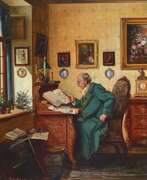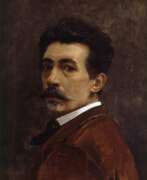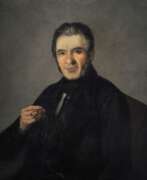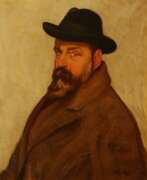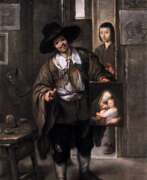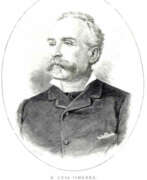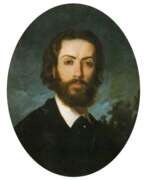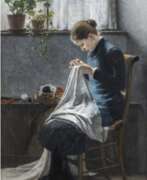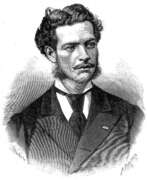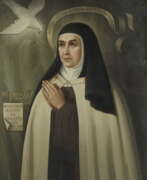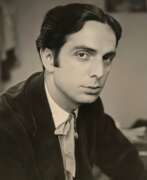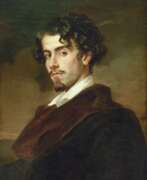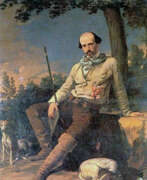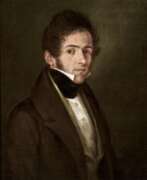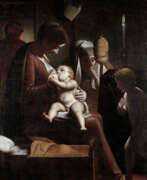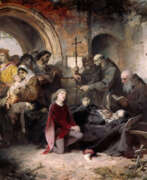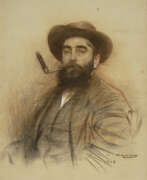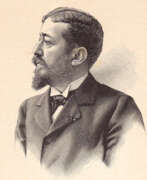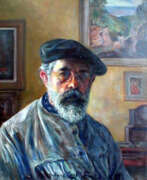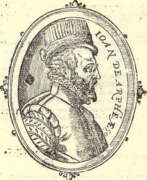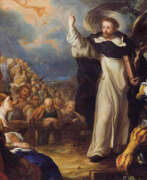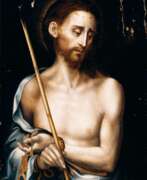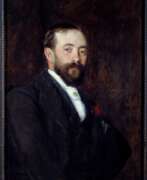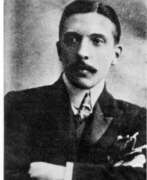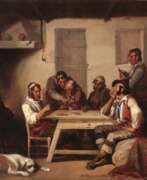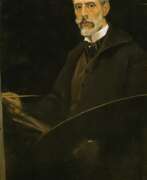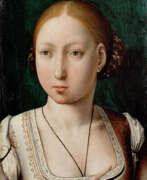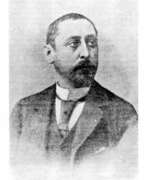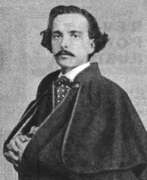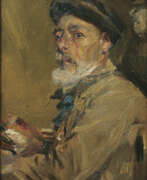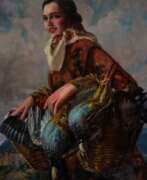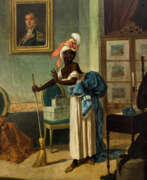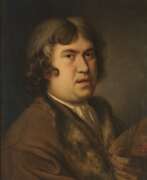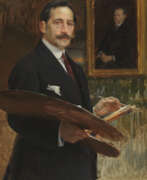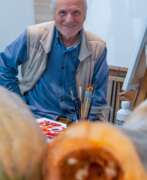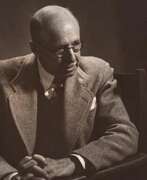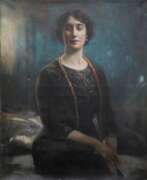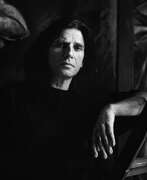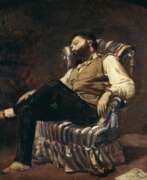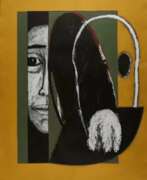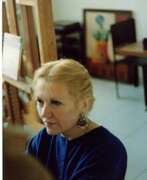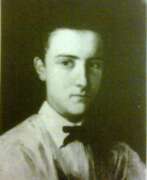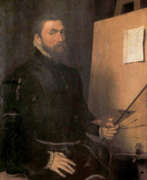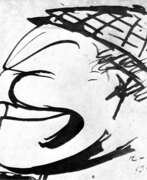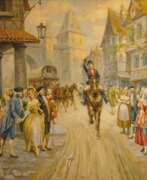Portrait Spain
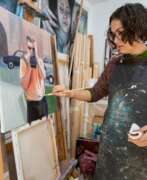

Nuria Farre Abejon is a Spanish hyperrealist artist living and working in Barcelona, Spain.
Her often hyper-realistic works revolve around issues that concern her as a young woman: anxiety, melancholy, family, memories and identity. At first, Nuria created translucent paintings through which she represented the duality between life and death. Later she explored self-portraiture, and today Nuria tries to explore her present through photographs from her family album, through which she creates interesting visual oil collages.
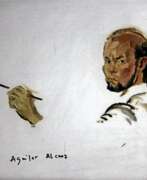

Frederico Aguilar Alcuaz is a Filipino abstract painter, sculptor and ceramist, and master tapestry artist.
He studied painting at the University of the Philippines' School of Fine Arts, then lived and worked both in the Philippines and Spain, and in Brno, Czech Republic, he worked extensively on tapestries.
Alcuaz has earned international acclaim with his vivid abstract works in various genres and techniques, and he has exhibited extensively internationally.
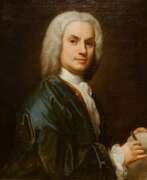

Jacopo Amigoni, also named Giacomo Amiconi, was an Italian painter of the late-Baroque or Rococo period, who began his career in Venice, but traveled and was prolific throughout Europe, where his sumptuous portraits were much in demand.
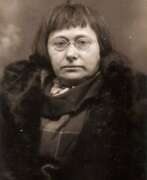

María Blanchard (born María Gutiérrez-Cueto y Blanchard) was a Spanish painter, renowned for her distinctive approach to Cubism. Born in Santander in 1881, Blanchard's early life was marked by challenges, including a physical disability due to a congenital condition. Despite these obstacles, she pursued her passion for art, studying under notable teachers in Madrid before moving to Paris, where she immersed herself in the avant-garde scene. Blanchard's work was characterized by her innovative Cubist style, which she developed through interactions with prominent Cubist artists like Juan Gris. Her paintings, such as "The Lighthouse" and "Still Life with Red Lamp," exemplify her ability to blend geometric abstraction with expressive color and form.
Throughout her career, Blanchard faced personal and financial hardships, yet she continued to evolve artistically, exploring themes of melancholy and isolation. Her significant contributions to Cubism and modern art were recognized in her lifetime, with her works exhibited in major venues and collected by institutions. Blanchard's legacy as a pioneering female artist in the early 20th-century art world endures, with her paintings held in prestigious collections, including the Museum of Modern Art in New York and the Reina Sofia Museum in Madrid.
For art collectors and enthusiasts, Blanchard's work represents not only an important chapter in the history of Cubism but also the resilience and creativity of an artist who overcame significant personal challenges to leave a lasting mark on the world of art. To stay updated on exhibitions and sales related to María Blanchard's work, sign up for updates. This subscription ensures you're informed about new product sales and auction events dedicated to Blanchard's influential and captivating artwork.
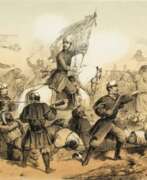

Bernardo Blanco y Pérez was a Spanish lithographer, painter and illustrator.
He studied at the Royal Academy of San Fernando, mainly drawing and lithography, and taught. Bernardo Blanco was one of the artists whose work was included in a series of lithographs on the Spanish-Moroccan War (1859-1860).
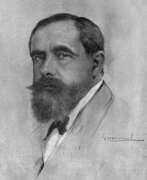

Hermenegildo Anglada Camarasa was a Spanish painter.
Camarasa studied at the Llotja de Barcelona School of Fine Arts under Modeste Urgel, whose work influenced his first landscapes. He moved to Paris in 1894, studying at the Académie Julian and the Académie Colarossi. His colorful style of painting shows a strong Oriental and Arabic influence, and his decorative style is associated with the work of Gustav Klimt.
In the early 1990s, Camarasa opened a painting school attended by many students, including Marie Blanchard. He was one of the founders of the Autumn Salons of Paris and was associated with the artists of the Vienna Secession. Camarasa's works from these years, depicting nighttime street scenes, Parisian cabarets and music halls, attracted the attention of Pablo Picasso, who had recently arrived in Montmartre; he even painted a profile portrait of Anglade.
In 1901 Camarasa took part in an international exhibition in Dresden, where he was a great success. He subsequently exhibited all over the world and was awarded gold medals in Venice (1907) and Buenos Aires (1910). During the war years 1939-1947 the artist lived in exile in France.


Alfredo Castañeda was a Mexican surrealist painter.
Castañeda had been interested in painting and drawing since childhood, but first became an architect, earning a degree in architecture from the University of Mexico. During his studies, he continued to paint as a hobby, which he became more and more serious about over the years. At university, Alfredo became acquainted with the painter, sculptor and architect Matthias Goeritz, as well as the work of René Magritte. Both played a huge role in the young artist's worldview.
After his studies, Castañeda worked as an architect and in 1969 had his first solo exhibition at Galeria de Arte Mexicano. His work has also been shown internationally numerous times in the United States and in many Latin American countries, including Mexico. His work is collected in collections and museums throughout the Americas, Europe and Asia.
Alfredo Castañeda is known for his surrealist paintings, often portraits. The same character appears in many of his paintings, sometimes revealed in multiple versions of himself. This person (often resembling the artist himself) seems to be engaged in an endless dialog with himself, involving the viewer as well.


Giovanni Battista Castello was an Italian historical painter. His best-known works are the paintings on the vault of the Basilica della Santissima Annunziata del Vastato. He was an architect and sculptor as well as painter. He painted of the Martyrdom of St. Sebastian in the monastery of San Sebastiano. He worked on various projects with his friend Cambiaso, including in a chapel for the Duomo di San Lorenzo.
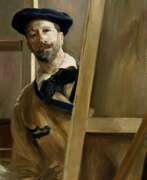

José Villegas Cordero was a Spanish painter, master of costume and genre scenes, who directed the Prado Museum from 1901 to 1918.
He studied at the School of Fine Arts in Seville and became known as a talented genre painter, noting interesting domestic scenes and accurately portraying the characters. Domestic painting at that time was very popular with the public. The artist also deals with the themes of the East, with great skill drawing pictures from sketches he made on a trip to Morocco.
In 1898 Villegas Cordero was appointed director of the Spanish Academy in Rome, and in 1901 he was appointed director of the Museo del Prado, the same museum that had once copied Velázquez's paintings himself while studying his art.
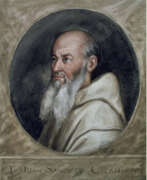

Juan Sánchez Cotán was a Spanish painter, born in 1560 in Orgaz, Toledo, and passed away in 1627 in Granada. He is celebrated for being among the earliest Spanish painters to focus on still life, a genre he significantly influenced before deciding to join a Carthusian monastery at the age of forty-three. Cotán's still lifes are renowned for their simplicity, featuring a few fruits or vegetables, some hanging from fine strings and others placed on a ledge, against a dark, almost impenetrable background. This unique style not only highlights the geometric clarity of the forms but also imbues them with a mystical quality, setting him apart from his contemporaries.
Before embracing a monastic life, Cotán had an established career in Toledo, accepting commissions for religious paintings and engaging in the secular art scene. His transition to monastic life did not halt his artistic pursuits; he continued painting, focusing on religious themes and the history of the Carthusian order. Notably, Cotán's still lifes, such as "Still Life with Quince, Cabbage, Melon, and Cucumber" housed in the San Diego Museum of Art, and "Still Life with Game Fowl" at the Art Institute of Chicago, are among the most emblematic of his work, showcasing his ability to transcend the ordinary and imbue it with profound spiritual significance.
Juan Sánchez Cotán's work is a bridge between the mundane and the mystical, capturing the beauty of simple objects with unparalleled depth and precision. His legacy is a testament to the power of still life as a genre capable of conveying complex themes of spirituality and the natural world. For collectors and experts in art and antiques, Cotán's paintings are not just visually captivating; they are portals to a bygone era that celebrated the beauty in the simplicity of everyday life.
For those interested in exploring the exquisite detail and profound tranquility of Juan Sánchez Cotán's work, signing up for updates on new product sales and auction events related to his art could enrich your collection and deepen your appreciation of this pivotal figure in Spanish art history.
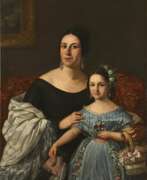

Antonio Gómez Cros was a Spanish painter, lithographer and decorator.
Antonio began studying painting at the Academy of Fine Arts of San Carlos in Valencia and completed his studies at the Royal Academy of Fine Arts of San Fernando. He was a representative of early romanticism with signs of classicism.
Antonio Gómez Cros specialized in historical scenes and was a recognized portrait painter. In 1846 he was appointed honorary chamber painter to Elizabeth II and painted several famous historical, battle and religious paintings in this position. The artist also painted walls and curtains in palaces and theaters.
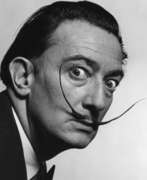

Salvador Dalí, a Spanish Surrealist painter and printmaker, is celebrated for his vivid and imaginative works that delve into subconscious imagery. Born on May 11, 1904, in Figueres, Catalonia, Spain, Dalí's early exposure to Impressionism and Renaissance masters significantly influenced his artistic development. His education in fine arts in Madrid further shaped his style, leading him to experiment with Cubism and avant-garde movements. In the late 1920s, Dalí embraced Surrealism, joining the Surrealist group in 1929 and rapidly becoming one of its most prominent figures.
Dalí's most famous work, "The Persistence of Memory," completed in 1931, epitomizes the Surrealist movement with its iconic melting clocks symbolizing the fluidity of time. His artistic repertoire was diverse, including painting, graphic arts, film, sculpture, design, and photography, often incorporating themes of dreams, the subconscious, sexuality, religion, and science. Despite his remarkable artistic contributions, Dalí's eccentric and flamboyant public persona often overshadowed his work. He faced criticism for his public support of the Francoist regime and the authenticity of some of his late works.
Dalí's legacy is preserved in major museums, notably the Dalí Theatre-Museum in Figueres and the Salvador Dalí Museum in St. Petersburg, Florida. These institutions showcase his extensive and varied body of work, illustrating his profound impact on Surrealism, pop art, and contemporary artists.
If you're captivated by the surreal world of Salvador Dalí and want to stay informed about new sales and auction events featuring his works, sign up for our updates. Our service is tailored specifically for art collectors and experts, providing timely information and insights into the vibrant market of Dalí's art. Remember, this subscription is focused solely on bringing you the latest in product sales and auction events related to Salvador Dalí. Don't miss out on the opportunity to enrich your collection with pieces from one of the most influential surrealists of all time. Sign up now and be the first to know about these exclusive events.
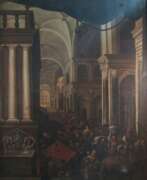

José de Cieza, a Spanish painter, was a prominent figure in the Granada School, known for his expertise in painting in distemper and oil. Born in 1656 in Granada, he was the son and pupil of the painter Miguel Jerónimo de Cieza. José's early years in Granada were marked by his work in religious paintings and decorations for the Corpus Christi festival. His talent was nurtured under the influence of the renowned Alonso Cano and Pedro Atanasio de Bocanegra.
In 1686, José moved to Madrid, where his skills flourished. He painted scenes for the Buenretiro theatre and, in 1689, earned the prestigious title of Painter to the King. His Madrid period was characterized by collaboration with other artists on projects for churches and convents. Notably, his work included paintings for the convent of the Mínimos de la Victoria in Madrid. One of his most famous works from this period, "Aparición de San Francisco de Paula," is housed in the Museo del Prado.
José de Cieza's style evolved from the influence of Cano to the full baroque of the Madrid court. His works are celebrated for their intricate detail and mastery in depicting religious themes. Unfortunately, his promising career was cut short by his untimely death in 1692.
For collectors and experts in art and antiques, José de Cieza’s works remain a testament to the rich cultural heritage of the Granada School. His paintings not only showcase artistic prowess but also serve as historical windows into 17th-century Spanish art and culture.
For enthusiasts and collectors interested in the Granada School, subscribing to updates about José de Cieza’s works is essential. Stay informed about new discoveries, sales, and auction events. Sign up now for exclusive insights into the world of this master painter.
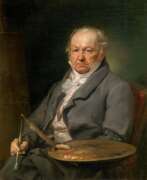

Francisco José de Goya y Lucientes was a Spanish romantic painter and printmaker, celebrated as the most pivotal Spanish artist of the late 18th and early 19th centuries. Born in Fuendetodos, Aragon, Spain, on March 30, 1746, Goya's work reflects a tumultuous period of history, intertwining the personal, political, and social upheavals of his time with a bold and innovative artistic vision. His early career was marked by portraits of the Spanish aristocracy and royalty, as well as Rococo style tapestry cartoons for the royal palace. However, following a severe illness in 1793 that left him deaf, his art took on a darker and more pessimistic tone.
Goya's oeuvre is vast, encompassing around 700 paintings, 280 prints, and several thousand drawings, through which he depicted a wide range of subjects from the whimsical to the macabre. Notable among his works are "The Naked Maja," "The Clothed Maja," "The Family of Charles IV," "The Third of May 1808: The Execution of the Defenders of Madrid," and "Saturn Eating His Children." His etchings, particularly the series "Los Caprichos" and "The Disasters of War," are celebrated for their intricate detail, emotional depth, and critical social commentary.
Goya's contribution to art goes beyond his mastery of painting and printmaking. He is often considered the bridge between the Old Masters and modern art, introducing themes and techniques that would influence countless artists in the centuries to follow. His ability to capture the essence of his era, the human condition, and the complexities of his own psyche, makes his work universally relatable and enduringly relevant.
His most famous paintings are housed in prestigious museums worldwide, including the Museo del Prado in Madrid, which holds an extensive collection of his works. The Prado's collection serves as a testament to Goya's significant impact on art and culture, offering insight into the artist's unique perspective on the world around him.
For collectors and experts in art and antiques, Francisco de Goya's legacy is a beacon of artistic innovation and historical significance. His works not only adorn the walls of museums but also continue to inspire and provoke thought among audiences across the globe.
For updates related to Francisco de Goya, including new product sales and auction events related to his works, sign up for our newsletter. Stay informed on the latest offerings and opportunities to add to your collection of this legendary artist's works.


Bernardo Germán de Llórente was a Spanish painter of the late-Baroque period. He was active in Seville where he was one of the followers of Murillo and made a name with his devotional paintings of the Virgin Mary. He also painted portraits and still lifes with trompe-l'œil effects.


Raimundo de Madrazo y Garreta was a Spanish painter from the Madrazo family of artists who worked in the Realistic style, although his later work shows signs of Rococo and Japanese influence. He was known primarily for his genre paintings and portraits.


Blas de Prado, a distinguished Spanish painter, was born around 1545 in Camarena, near Toledo. A pupil of Alonso Berruguete, Prado is renowned for his contributions to Spanish Renaissance art. His works, characterized by their classical and naturalistic styles, reflect a deep understanding of Italian influences and a mastery in portraiture.
Prado's career was predominantly centered in Toledo, where he created numerous works for local churches and also received patronage from the Spanish royal court. His painting style is noted for its blend of Italian classicism and Venetian color influences, visible in his religious and portrait works. One of his significant contributions to Spanish art was introducing still-life painting, as noted by the art theorist Francisco Pacheco.
Among Prado's most notable works is "The Holy Family with Saints Ildephonsus, John the Evangelist and the Master Alonso de Villegas" (1589), which is housed in the Museo del Prado, Madrid. This masterpiece showcases his skill in blending monumental Italian classicism with realistic portrayal. His other significant works include "The Descent from the Cross" at Valencia Cathedral, showcasing influences from Michelangelo, and a series of frescoes in the chapel of the Quinta de Mirabel, Toledo.
Prado's legacy extends beyond his paintings. His influence as a teacher is evident in the works of his students, like Juan Sánchez Cotán, a significant figure in Spanish still-life painting. Blas de Prado's artistry left an indelible mark on the Spanish Renaissance, making him a figure of immense interest to collectors and experts in art and antiques.
For enthusiasts looking to delve deeper into the world of Spanish Renaissance art, especially the works of Blas de Prado, subscribing to our updates can be a rewarding journey. Our updates provide exclusive information on new product sales and auction events related to Prado's works, helping collectors and art aficionados stay informed about this illustrious artist. Sign up today and join a community passionate about the richness of Spanish art history.
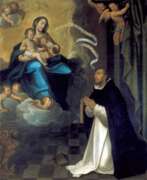

Pedro de Raxis was a Spanish painter and gilder known for his contributions to the Granadan school of art. Born in 1555 in Alcalá la Real, Jaén, Raxis became a key figure in Granada art of the Counter-Reformation era. Characterized by vivid narrative and Mannerist influences, his works are characterized by intense, luminous colors and delicate composition.
Raxis's career was marked by numerous significant commissions. Among his best-known works are the murals for the church of San Cecilio in Granada (1580), the retablos of Santa María Mayor de Alcaudete (Jaén) and Asunción de María in Granada Cathedral (1615). These works demonstrate his exceptional skill in estofado, a technique involving the gilding and polychroming of statues and altarpieces.
One of Raxis's most famous works is Aparicion de la Virgen a San Jacinto, preserved in the Granada Museum of Fine Arts. This painting, dating from around 1600, represents a significant achievement in Raxis's artistic journey. It illustrates the mystical ecstasy and contemplative rapture characteristic of Spanish Baroque culture. The expressive depth and rich tonal range of the painting became more evident after its restoration in 1998.
Pedro de Raxis's influence extended beyond his paintings. Contemporaries such as Francisco Pacheco praised his mastery of estofado and gilding. Raxis established one of the most prolific and versatile workshops in Granada, which left an indelible mark on the artistic landscape of Andalusia.
For collectors and art experts, Raxis' work remains a testament to the rich cultural heritage of the Granada school. His paintings not only reflect the artistic fervor of the era, but also provide a glimpse into the religious and cultural world of Counter-Reformation Spain.
To delve deeper into the world of Pedro de Raxis and to keep up to date with new sales and auction events related to this master of the Granada School, subscribe to our updates. Our subscription will keep you up to date with the latest offers and events.


Jusepe de Ribera, a Spanish painter, etcher, and draughtsman, was a notable figure in the world of art, renowned for his distinct style and contribution to Castilian tenebrism. Born in 1591 in Játiva, near Valencia, Spain, Ribera's early life and artistic origins are somewhat shrouded in mystery, with no definitive documentation on his initial training. However, it's speculated that he might have started his artistic journey in Valencia.
Ribera's career took a significant turn when he moved to Italy, where he spent the majority of his professional life, predominantly in Naples, a Spanish territory at that time. He arrived in Naples around 1616 and soon established himself as an important artist in the city. His marriage to Caterina Azzolino, daughter of Sicilian painter Giovanni Bernardino Azzolino, in November of the same year, further solidified his connections in the Italian art scene.
Ribera was deeply influenced by Caravaggio and is often described as one of Caravaggio's followers. His early works displayed a marked tenebrism, characterized by stark chiaroscuro and a robust, scratchy handling of paint. However, Ribera's style evolved over time, moving away from this intense tenebrism to incorporate more color and softer modeling in his later works.
His body of work is diverse, including altarpieces, religious subjects, mythological themes, and portraits. Ribera had a penchant for depicting scenes of martyrdom with graphic realism, as seen in works like the celebrated "Martyrdom of St Bartholomew." Yet, he was also capable of expressing great tenderness, evident in paintings such as "The Adoration of the Shepherds." His secular subjects often depicted philosophers as beggars or vagabonds, adding a unique dimension to the Baroque repertoire.
Ribera's influence extended beyond Naples to Spain and the broader European art scene. He played a foundational role in fostering a respect for individual humanity in Spanish art, a trend that continued with artists like Velázquez and Goya. His works were widely exported to Spain and had a significant impact on both Italian and Spanish art. Ribera remains a highly respected figure in art history, and his works are featured in prominent museums and galleries worldwide, showcasing his enduring legacy in the realm of art and culture.
For art collectors and experts, Ribera's works represent a crucial chapter in the development of European art, particularly in the context of the Spanish Baroque and the evolution of tenebrism. His innovative approach to subject matter and technique continues to inspire and captivate audiences, making his works highly sought after in the world of art and antiques.
To stay updated on sales and auction events related to Jusepe de Ribera, sign up for our updates. This subscription service is tailored specifically for enthusiasts and experts in art and antiques, ensuring that you are the first to know about new opportunities to acquire works related to this influential artist.


Lucas de Valdés Carasquilla, a Spanish Baroque painter and engraver from Seville, born in 1661, was the third child of Juan de Valdés Leal. Influenced by his father's role in the painting guild, he began artistic endeavors early, creating his first known work at eleven. Alongside his siblings, he learned painting and engraving techniques in his father's workshop. Notably, he collaborated on assignments like adorning the Hospital de los Venerables' church. After formal education at San Hermenegildo College, he married the daughter of sculptor Francisco Dionisio de Ribas.
Lucas's prominence grew as his father's health declined. He completed various works, including murals, engravings, portraits, and more, reflecting influences from Murillo and others. His significant projects encompassed the murals in churches like the Hospital de los Venerables and the convent of San Pablo el Real. Around 1715, he painted the dome of the church at San Luis de los Franceses, then shifted to teaching mathematics at the Academy of Guardiamarinas in Cádiz from 1719, marking a decline in artistic output. He passed away in Cádiz on February 23, 1725.
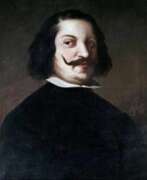

Juan de Valdés Leal, born on May 4, 1622, in Seville, Spain, and passing away on October 15, 1690, was a Spanish painter and etcher celebrated for his Baroque era works. Valdés Leal is recognized for his dramatic and often somber thematic paintings which starkly contrasted with the serene styles of his contemporaries. His notable contributions include not just painting but also sculpture and architecture, indicating his versatile artistic talents. Educated under Antonio del Castillo in Córdoba, Valdés Leal's body of work covers religious and vanitas themes, emphasizing the transient nature of earthly life and the inevitability of death.
One of Valdés Leal's significant periods was after his return to Seville in 1656, where alongside Bartolomé Esteban Murillo, he co-founded the Seville Academy of Art. This period marked the creation of some of his most poignant works, including "In ictu oculi" and "Finis gloriae mundi," which he painted for the Charity Hospital in Seville. These works are revered for their deep contemplation on mortality and the fleeting nature of worldly success.
Valdés Leal's legacy extends beyond his own lifetime, with several of his children, including Lucas, Juan, Maria, and Laura, following in his artistic footsteps. His influence persisted in Seville's artistic landscape, especially in religious art, where his pieces continued to inspire both awe and reflection.
For collectors and experts in art and antiques, Juan de Valdés Leal's work offers a profound glimpse into the Baroque era's complex interplay of beauty, spirituality, and the macabre. His paintings, many of which reside in museums and private collections worldwide, remain a testament to his skill and depth as an artist.
To stay updated on sales and auction events related to Juan de Valdés Leal's works, signing up for updates can provide exclusive access to the latest available pieces and related events, ensuring enthusiasts and collectors don't miss out on acquiring or viewing works by this illustrious artist.
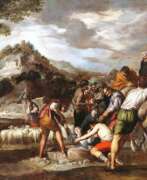

Antonio del Castillo y Saavedra was a Spanish Baroque painter, sculptor, and poet, renowned for his significant contributions to the Cordoba School of art. Born in Cordoba, Spain, in 1616, Castillo y Saavedra grew up under the influence of his father, Agustín del Castillo, also a painter. His early education continued under Ignacio Aedo Calderón, and later, in Seville, he studied with Francisco de Zurbarán and his uncle Juan del Castillo.
Castillo y Saavedra's work is distinguished by its adherence to naturalism, a style he maintained despite the evolving Baroque trends of his time. His landscapes and narrative paintings, often featuring elaborate architectural or landscape settings, showcase his unique spatial sense and meticulous studies of nature. Praised as an "excellent landscape painter" by his contemporaries, Castillo y Saavedra was adept at capturing nature's essence and integrating it seamlessly into his historical oil paintings. His works, such as the Calvary of the Inquisition and the series on the life of Joseph, exhibit a luminous sense of landscape with refined color palettes.
Some of his most celebrated works are housed in prestigious institutions around the world. The Museo del Prado in Madrid, Spain, holds an impressive collection of his paintings, including the notable series on the story of Joseph. The Museo de Bellas Artes de Córdoba also features his significant works, like the Calvary of the Inquisition.
Despite his death in 1668, Castillo y Saavedra's legacy lives on through his contributions to the Cordoba School, influencing generations of artists who followed. His work remains a testament to the rich cultural heritage and artistic prowess of the Spanish Golden Age.
For collectors and experts in art and antiques, Antonio del Castillo y Saavedra's works represent a pinnacle of Baroque art. To stay informed about new sales and auction events related to Castillo y Saavedra's work, we invite you to sign up for our updates. This subscription will keep you at the forefront of the latest developments in this fascinating field.
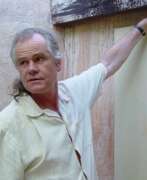

Albrecht Demitz is a German graphic artist and sculptor who belongs to the "New Fauves" (German "Neue Wilde") group in Berlin. His paintings are often expressive, abstract and executed in expressive bright colors. He works in silkscreen techniques in particular, and creates sculptures from various materials - wood, twigs, stones, metals and waste.


Luca Giordano, born on October 18, 1634, in Naples, emerged as the most celebrated Neapolitan painter of the late 17th century, known for his quick workmanship, which earned him the nickname "Luca Fa Presto" from his father's frequent admonitions to work quickly. His profound contribution to the development of Italianate landscape painting marked a significant chapter in art history.
Giordano's works are celebrated for their dynamic compositions, vibrant color palette, and the ability to infuse his subjects with vitality and emotion. His prolific career saw him working across Italy and Spain, leaving behind a legacy that includes monumental works such as the frescoes in the Palazzo Medici-Riccardi in Florence and the ceiling paintings in Santa Brigida Church in Naples. His late works, lighter and prefiguring the Rococo movement, were particularly influential and admired by later artists such as Fragonard.
Giordano's artistic prowess was not confined to a single genre; his oeuvre includes religious and mythological scenes, landscapes, and portraits. His versatility and ability to adapt his style to suit different subjects and patrons' preferences made him a pivotal figure in the transition from the Baroque to the Rococo style. Despite criticisms of superficiality due to his rapid execution, Giordano's work was fundamentally rooted in a deep understanding of his predecessors, combining the dramatic intensity of the Baroque with the emerging lighter Rococo aesthetic.
For collectors and experts in art and antiques, Luca Giordano's paintings represent a significant period in art history, bridging the gap between two major stylistic periods and reflecting the vibrant cultural exchanges of 17th-century Europe. His works, found in esteemed collections worldwide, continue to be studied and admired for their technical brilliance and artistic innovation.
To explore more about Luca Giordano's masterful contributions to the world of art and to stay updated on exhibitions or sales featuring his work, consider signing up for updates from art institutions. This subscription ensures enthusiasts and collectors are well-informed about developments related to Giordano's oeuvre, enhancing their appreciation and understanding of his enduring legacy.


Juan Gris, a Spanish painter and sculptor born José Victoriano Carmelo Carlos González-Pérez in Madrid, is celebrated for his significant contribution to the Cubist movement. Gris moved to Paris in 1906, where he developed a close relationship with notable figures such as Henri Matisse, Georges Braque, Fernand Léger, and Pablo Picasso, adopting the vibrant city as his primary residence and embracing the avant-garde art scene.
In his early years, Gris pursued engineering but quickly shifted his focus to art, demonstrating a natural talent that led him to study under José Moreno Carbonero, a respected artist in Madrid. His artistic journey took a significant turn upon his move to Paris, where he immersed himself in the world of illustration before evolving into a pivotal Cubist painter. Unlike his contemporaries, Picasso and Braque, Gris's Cubist works are known for their bright, harmonious colors and innovative use of papier collé (collage), marking a departure from the more monochromatic style of Analytical Cubism to a more vibrant Synthetic Cubism.
Gris's transition to Synthetic Cubism after 1913, marked by his unique approach to color and composition, set him apart. His works, characterized by their clarity, order, and integration of geometric forms with a distinctive color palette, made significant impacts on both the Purist style and the post-war "return to order" movement. Notable works by Gris are held in prestigious collections worldwide, including "Portrait of Picasso" (1912) at the Art Institute of Chicago and "Still Life before an Open Window, Place Ravignan" (1915) at the Philadelphia Museum of Art, exemplifying his innovative approach to Cubism.
For collectors and experts in art and antiques, Juan Gris remains a figure of immense historical and aesthetic importance, embodying the spirit of innovation and the search for new means of expression that defined the early 20th century. His commitment to exploring the boundaries of Cubism, combined with his unique palette and compositional techniques, continues to inspire and captivate audiences. To stay updated on new product sales and auction events related to Juan Gris, signing up for updates is highly recommended for those with a keen interest in his work and Cubism at large.


Ulrich Leman is a German artist of "Rhenish Expressionism.
He studied at the Düsseldorf Academy and joined the group of progressive artists "Das Junge Rheinland". In the late 1920s, Leman made his first trip to Mallorca and decided to stay there. The beauties of this Spanish island inspired him to create many paintings with views of nature, depicting the characters of the local people.


Ximo Lizana is a Spanish media artist, multidisciplinary creator of the world of new media art and technological art, living and working in Madrid.
Ximo Lizana was the first artist in the history of Spanish art to include robotics in the collections of contemporary art (IVAM). He is a professor at UEM and winner of the National Prize in New Media Art and Technological Art.


Francesco Lupicini was an Italian Baroque painter who worked in Spain.
Lupicini lived and worked in Zaragoza. His most famous painting is Mary Magdalene Instructed by her sister Martha, which is in the collection of the Historical Museum. He also painted allegories, portraits and scenes with religious motifs.
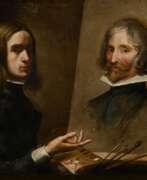

Jusepe Martínez, a Spanish painter born in Zaragoza in 1602, was not just an artist but also a significant contributor to art literature. His work, "Discursos practicables del noblisimo arte de la pintura," written around 1675 but published posthumously in 1866, remains a testament to his expertise and his impact on the art world.
Martínez's journey in art took him beyond the borders of Spain. His studies and work in Italy, coupled with his experiences in Spain's major artistic and literary centers, notably enriched his perspectives. This broad exposure influenced his participation in the Aragonese school, where he was actively involved in the cultural life of his time. His interactions with prominent artists like Diego Velázquez and Alonso Cano, as well as with writers and intellectuals of the Spanish Golden Age, infused his work with a depth and richness that transcended the typical.
What sets Martínez's treatise apart is not just its practical insights into painting but its philosophical underpinnings. His discussions on art go beyond mere technique, delving into pictorial aesthetics and the very vocation of painting. This approach demonstrates a nuanced humanism, making his work resonate more with philosophical discourses than with typical instructional art books.
For art collectors and experts, Martínez's work offers more than historical knowledge. It provides a window into the artistic soul of the 17th century, reflecting the thoughts and practices of one of the period's most thoughtful artists. His writings not only guide the hand but also inspire the mind, offering valuable insights into the art of that era.
For those keen on exploring Martínez's legacy further, his self-portrait with his father, Klaas de 2de, around 1630, is a remarkable piece housed in the Zaragoza Museum. This work exemplifies his skill and artistic expression, offering a glimpse into his personal life and artistic journey.
If Jusepe Martínez's story intrigues you and you wish to stay informed about similar artists, sign up for our updates. We focus on bringing you the latest on product sales and auction events related to key figures like Martínez. Join our community of art enthusiasts and collectors to ensure you don't miss out on these exclusive opportunities.
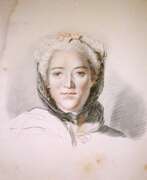

Anna Maria Mengs was a German painter of the second half of the 18th century. She is known as a painter and graphic artist, famous for her portraits.
Anna Maria Mengs was the daughter of Anton Raphael Mengs, a famous German painter and representative of classicism, from whom she studied painting. In 1777 she married the Spanish engraver Manuel Salvador Carmona and had seven children. Despite family obligations, she continued to paint miniatures and pastels, as contemporaries noted, with talent and exquisite taste. In 1793, a year after her death, her work was exhibited at the Accademia de San Fernando in Madrid.


Carlos Múgica y Pérez was a Spanish painter, draftsman and illustrator.
He illustrated many historical works, depicting the kings and high nobility of Spain, as well as battle scenes. His drawings are in the Album of the African War, with a series of lithographs on the Spanish-Moroccan War (1859-1860).


Bartolomé Esteban Murillo was a Spanish painter, renowned for his contributions to the world of art and culture. Born in Seville, Spain, in the 17th century, Murillo specialized in religious and genre painting, leaving a lasting impact on the art world.
Murillo is known for his remarkable ability to infuse his paintings with deep emotion and realism. His works often depicted scenes from everyday life, as well as religious subjects. One of his notable specialties was his exceptional skill in capturing the innocence of children in his artwork. His use of soft colors and delicate brushwork gave his paintings a unique and timeless quality.
One of Murillo's most famous works is the series of paintings known as the "Immaculate Conception." These paintings, which depict the Virgin Mary as a young girl, have been praised for their beauty and devotion. Many of his works are housed in museums and galleries around the world, attracting art enthusiasts and collectors.
For collectors and art experts, Murillo's works hold a special place in the art world, with their ability to evoke powerful emotions and capture the essence of the human experience. To stay updated on the latest news and events related to Bartolomé Esteban Murillo's paintings and exhibitions, consider subscribing to our newsletter. We'll keep you informed about new product sales and auction events featuring this exceptional artist's works. Join us in celebrating the legacy of Bartolomé Esteban Murillo and his invaluable contributions to the world of art.
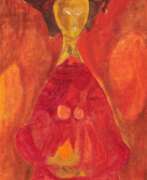

Felipe Orlando, full name Juan de Dios Felipe Orlando García Murciano, was a Spanish-Cuban artist who lived in Spain and devoted himself to writing for a living through painting. He was an anthropologist by training and a musicologist by hobby.
Belonging to the artistic avant-garde movement that emerged in the 1930s, it is difficult to place his painting in the mainstream of young modernists.
Felipe Orlando's painting is characterised by a constant development. It begins with paintings that could be called figurative. They are usually always interior scenes in which women, Afro-Cubans or still lifes take centre stage.
After moving to Spain, his painting develops towards abstraction, especially the informal current, but always presents some figurative reference. Serenity and lyricism prevail in the textures. The titles are suggestive and colour is more important than form.


Pedro Orrente was a Spanish painter, renowned for his contributions to Tenebrismo toledano and early Baroque art. Born in Murcia in 1580 and active until his death in Valencia in 1645, Orrente was a pivotal figure in Spanish painting. His style, often compared to the Venetian Bassano family, was notable for blending Old-Testament subjects with lush landscapes, earning him the moniker "the Spanish Bassano."
Orrente's journey as an artist was marked by his travels and influential associations. After beginning his career in Murcia, he moved to Toledo, where he was influenced by the works of the Bassano family and other Venetian masters. His travels to Venice and Rome enriched his art, as he assimilated the naturalism of Caravaggio and the vibrant styles of Titian, Tintoretto, and Veronese.
His works, celebrated for their naturalistic approach and dynamic compositions, can be found in significant collections. The Prado Museum in Madrid houses several of his paintings, including "The Adoration of the Shepherds" (1623-1625) and "Labán da alcance a Jacob." The Metropolitan Museum of Art in New York features his work "Thomas of Villanova, Archbishop of Valencia Distributing Alms to the Poor," showcasing his mastery in drawing. Orrente's "The Crucifixion," a powerful depiction of Christ's crucifixion, is another testament to his talent, blending dramatic composition with a profound understanding of human emotion.
Orrente's influence extended beyond his lifetime, shaping the works of artists like Esteban March, Pablo Pontons, and Mateo Gilarte. His legacy in the Baroque art movement is undeniable, as he pioneered the integration of naturalistic styles in Spain.
For art collectors and experts, understanding Orrente's contributions offers a deeper insight into the evolution of Baroque art. His works not only reflect the artistic trends of his time but also his unique interpretation of biblical narratives and natural landscapes.
For enthusiasts of Pedro Orrente's art and the Baroque era, signing up for updates is essential. Our subscription service offers the latest news on product sales and auction events related to Orrente's works. This is a unique opportunity to stay informed about the availability of masterpieces by this eminent artist.
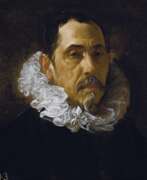

Francisco Pacheco del Río, baptized on November 3, 1564, and passing away on November 27, 1644, was a distinguished Spanish painter. Renowned for his dual role as Diego Velázquez's teacher and father-in-law, Pacheco's influence extends beyond his familial ties, contributing significantly to the arts through his seminal textbook, "Art of Painting." This work remains a crucial resource for understanding 17th-century artistic practices in Spain. Often referred to as the "Vasari of Seville," Pacheco's insights into painting theories and reflections on his contemporaries have left an indelible mark on the history of art, despite criticisms of his conventional execution in painting.
Pacheco's early life was marked by an immersive education in art, learning from Luis Fernandez and drawing inspiration from Italian masters. His journey included a pivotal sojourn to Madrid and Toledo in 1611 to study the works of El Greco, which further enriched his artistic repertoire. Upon his return to Seville, Pacheco opened an art school, laying the groundwork for his future contributions to art education and theory.
His career was notably characterized by his position as the official censor for Seville's Inquisition, which influenced his academic approach to religious subjects. Despite this, his paintings, such as the Last Judgment and Martyrs of Granada, are celebrated for their monumental scale. Pacheco's most enduring legacy, however, may be his influence on Diego Velázquez, whom he mentored for six years. Velázquez's marriage to Pacheco's daughter Juana in 1618 further solidified their personal and professional bonds. Pacheco's "Arte de la pintura" not only provided invaluable biographical information on Spanish painters of his era but also laid down foundational theories on iconography, materials, and technique.
For those interested in exploring Francisco Pacheco del Río's works further, notable pieces can be found in prestigious collections, such as the Museo Nacional del Prado, enriching our understanding of his impact on the art world.
Art enthusiasts, collectors, and experts are encouraged to sign up for updates to stay informed about new product sales and auction events related to Francisco Pacheco del Río, ensuring you remain at the forefront of developments in the fascinating world of art and antiques.
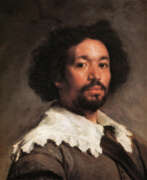

Juan de Pareja was a Spanish painter and slave, born in Antequera, near Málaga, Spain. He is known primarily as a member of the household and workshop of painter Diego Velázquez, who freed him in 1650. His 1661 work The Calling of Saint Matthew (sometimes also referred to as The Vocation of Saint Matthew) is on display at the Museo del Prado in Madrid, Spain.
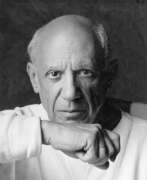

Pablo Ruiz Picasso, a Spanish artist renowned for his revolutionary contributions to the 20th-century art scene, is a figure that resonates profoundly with collectors and art experts. His unique blend of talents in painting, sculpture, printmaking, and ceramic art, infused with his time in France, positioned him as a pivotal character in modern art history.
Picasso's artistic journey was marked by distinct periods, each showcasing his evolving style and genius. His early years were characterized by the Blue Period (1901-1904), followed by the Rose Period (1904-1906), and then the African-influenced Period (1907-1909). Picasso's name is synonymous with Cubism, a movement he co-founded, which significantly altered artistic perspectives and methods. Works like "Les Demoiselles d'Avignon" (1907) and "Guernica" (1937) are emblematic of his cubist legacy, the latter being a poignant anti-war statement that remains influential.
His later years saw a return to more traditional styles, with neoclassical and surrealist influences becoming evident. Works from these phases reflect a deep engagement with mythological themes, as seen in "Faun with Stars" (1955), symbolizing his late-life romance with Jacqueline Roque, his second wife.
Picasso's prolific output and innovative spirit made him a legend in his own time, a status that only grew after his death. His works, housed in major museums and private collections worldwide, continue to captivate and inspire.
As a collector or expert in art and antiques, staying informed about Picasso's works, their auction events, and sales is essential. To stay updated on the latest developments and opportunities related to Pablo Picasso, sign up for our specialized updates. Rest assured, this subscription will focus solely on new product sales and auction events pertaining to Picasso's art, ensuring that you receive only the most relevant and valuable information.
